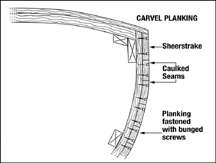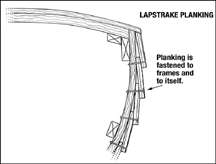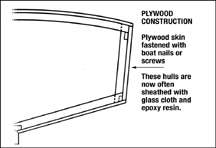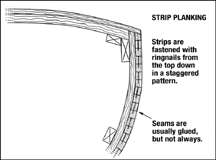Home > Wooden Boats- General Principles
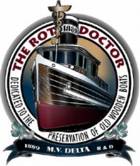
General Principles for Wooden Boat Repair
Repairing and maintaining wooden boats involves many variables and procedures. We offer the following brief commentary as a very general introductory guide, and some comments regarding the use of preservatives, resins and coatings, and about the products we sell.
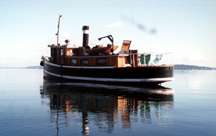 Our Research Lab…
Our Research Lab…
My wife and I bought Delta in 1995. There was a significant amount of rot in the horn timber which was a challenge. Delta became our research lab for the products we sell. Delta stays alive and functional through the magic of polymer chemistry. Read more about the repair of Delta’s Horn Timber: Fixing It On The Cheap.
Dr. Rot
Most of the accumulated information on wood boat construction, repair and restoration is in books, and not on the web. At The Rot Doctor™ we do our best to provide you with guidelines, but we, like most others on the web, are market-driven and promote our products when appropriate. We try always to be honest and will recommend other products if we believe they are suitable. When contemplating wooden boat repairs, especially if they are structural, go to the library and check out books that will help guide you.

Where books are deficient is in the area of new chemistry and techniques that can speed up the repair/restoration/maintenance process. Most of the books were written and printed many years ago, before the newer products were developed. Here the web can be valuable. Some products are unique and produce outstanding results, such as the S-1™ Clear Penetrating Epoxy Sealer, and there are always new coatings and sealants available. Most will out-perform the older, established product if they are applied to properly prepared surfaces exactly as the manufacturer recommends. Here the more complete and enlightened website can be valuable to you.
The factors that make wooden boats endure or decay are complicated, and trying to describe them as they interrelate to any particular boat is difficult. We at The Rot Doctor™ have a significant amount of experience with old wood boats and their repair. We will help you when we can, and the more detailed information that you can give us will result in more complete replies. We will consult by phone or email, and we try and answer all email within 24 hours. We will examine photographs if they are sent to us as jpeg images via email. Here, in very general terms, are some of the factors that contribute to the condition and durability of wooden boats:
The age of the boat: Older boats will be more likely to have wood deterioration problems than newer boats. There are exceptions, but this is generally true.
The type of construction: Certain types of construction, such as carvel, are more likely to experience wood deterioration and structural problems than other types of construction, such as strip-planked. We list the basic construction techniques below.
The type of wood: Some woods, such as old growth teak, are almost totally resistant to deterioration, while others, such as white pine, will rot in an instant if conditions are right. Woods that used to be fairly rot-resistant, such as cedar, rarely are anymore. This is because the new wood is usually farm-grown and lacks the accumulated resins and tightness of grain that gave old growth wood its longevity.
The boat’s environment: Certain areas of the country, such as the Southeast, have warm weather, warm water, and lots of rain and humidity. These are the factors that encourage and support fungal and bacterial growth in wood. Other areas, such as the Southwest, have colder water and less moisture, and so wood deterioration is not as prevalent. Damage to the wood and the coatings by UV light is prevalent wherever there are long periods of bright sunlight.
The care of the boat: How the boat is used and stored is a significant factor in the longevity of the boat. Wooden boats that are stored under open cover will have significantly fewer wood deterioration problems than boats that are stored outdoors in open slips. Boats that allow free air movement through the interior will have fewer problems than boats that are tightly covered with canvas tarps. Boats that are stored in salt water will tend to have less rot than boats in fresh water. Boats that are inspected closely and treated with appropriate chemistry will have fewer wood problems than boats that are just used and stored.
Be aware of the factors that will encourage or discourage wood deterioration, and act accordingly.
Types of Construction
Carvel: With this technique the planks are fit together edge-against-edge. They do not overlap each other. They are fixed at the frames and the outside of the hull is smooth. The edges are beveled so that they meet (or almost meet) at the inside, leaving an open seam on the outside that is generally caulked with cotton and then filled with a filler to obtain a smooth surface. This was one of the earliest methods of boat construction and is still sometimes used today. The wood in carvel boats was intended to move, and will expand and contract as the hull absorbs and emits moisture and as temperatures change. The integrity of the framing and the fasteners is of the utmost importance. New carvel-planked boats will usually run and sail without leaking, but older boats will almost always leak at least a little, and sometimes a lot.
Double-planked: The hull is constructed of two layers of edge-butted planks, one layer on a diagonal to the other and almost always with a mastic or painted canvas between the planking layers to prevent leakage. This was a common method of construction for Chris Craft before they converted to fiberglass. The double planking added some structural rigidity to the hull, but hull integrity still depends on the integrity of the fasteners and the framing. There is also the cold molding method of construction which is basically a refined modification of the double planked method, using thin sheets of wood bonded to each other in complex curves.
Lapstrake: The exterior edges of lightweight planks are overlapped slightly, and then beveled and riveted or screwed to frames, giving the hull itself an integrated structure, allowing some reduction in interior framing as compared to carvel construction. This technique was developed in Scandinavia over 1000 years ago, and is still used today in contemporary boat building. The Lyman line was one of the most famous of the lapstrake constructed boats in the United States, and many Lyman boats are still in use.
Plywood: Plywood boats became popular in the 50’s and are still commonly built today, usually by small shops and individuals. Plywood boats generally have relatively light interior framing and a more integrated structure. There are a number of different methods of fastening the plywood, from screws to polymer adhesives to “stitch-and-glue”. Good plywood is an excellent material for boat construction, but is vulnerable to rot, deterioration, and delamination.
Strip-planked: Strip-planked boats also became popular in the 50’s and are still being built by contemporary boat builders. Square or almost square strips of wood are laid over relatively light framing and bonded together edge-to-edge, originally with marine adhesives such as resorcinol but more recently with epoxies. They are the most watertight of wood constructed boats, and relatively easy to repair. The strip-planking gives the hull great structural rigidity. These boats are sometimes fiberglass covered, an idea that works better in theory than it often does in fact.
Resin over wood: In new construction this is almost always resin and fiberglass cloth over strip-planked or plywood boats. It can work well if epoxy resin is used and applied to new or good wood under proper conditions. There have been many attempts to coat old hulls with cloth and resin, and most of the time they result in failure. Wood moves and resin doesn’t.

